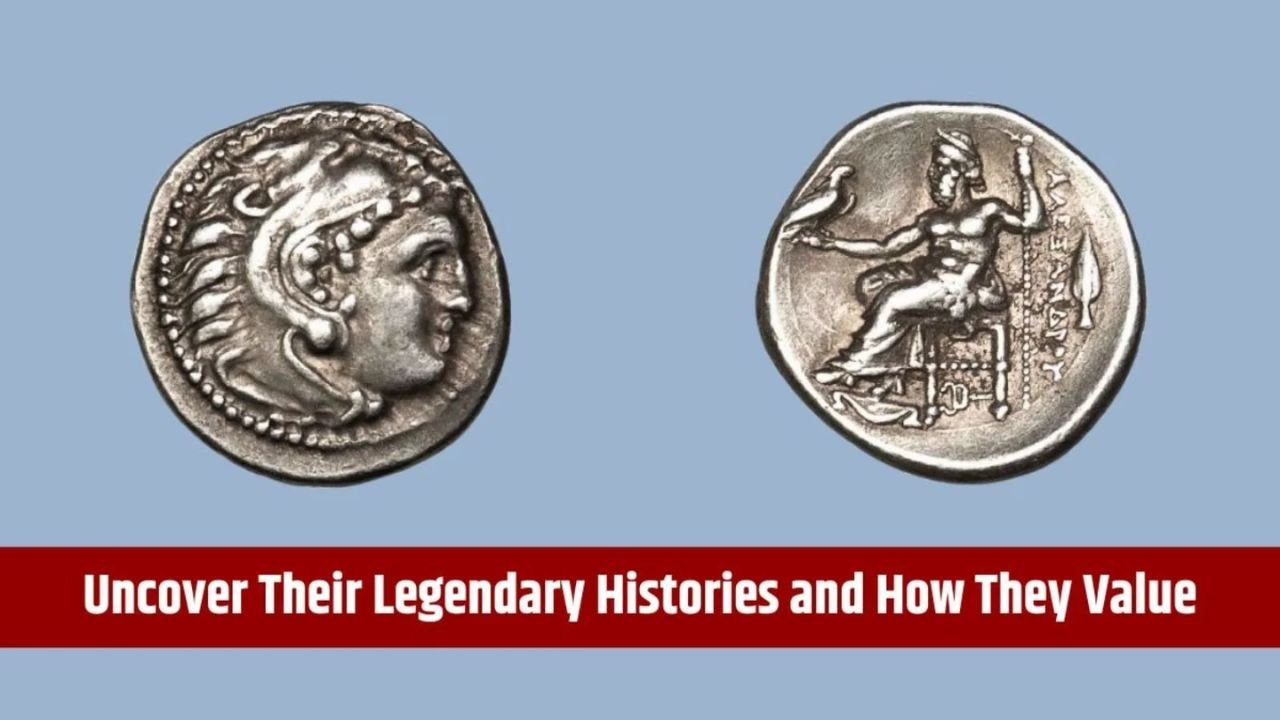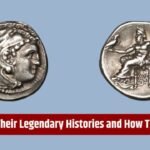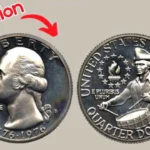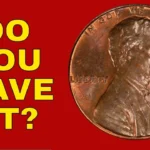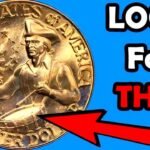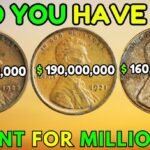Imagine casually sifting through your loose change—just another handful of quarters and dimes rattling around in your car’s cup holder. But what if one of those quarters was worth far more than you ever imagined? Not $5, not $500, but potentially $1 million? It may sound like the plot of a coin collector’s fantasy novel, but in reality, one specific Rare Bicentennial Quarter is valued at a jaw-dropping million dollars. And it’s not just an isolated case of collector madness—this coin holds genuine historical and monetary value that has numismatists (that’s coin experts, for the uninitiated) on high alert.
The Lincoln Wheat Penny Valued at $13 Million, Still in Circulation?
The Birth of the Bicentennial Quarter: A Patriotic Memento
To understand what makes the Rare Bicentennial Quarter such a prized collectible, we have to rewind the clock to the mid-1970s. America was preparing to celebrate its 200th birthday—two full centuries since the signing of the Declaration of Independence in 1776. In honor of this historic occasion, the U.S. Mint issued special commemorative versions of three coins: the quarter, half-dollar, and dollar.
Among these, the quarter took center stage. While it maintained the classic image of George Washington on the obverse (front), it was distinctly unique for bearing the dual date “1776–1976”—a visual marker of the nation’s bicentennial. On the reverse side, gone was the standard eagle design. Instead, the coin featured a striking image of a colonial drummer boy with a torch encircled by thirteen stars, each representing one of the original colonies. This artistic design was the brainchild of Jack L. Ahr, chosen through a nationwide design contest.
What started as a patriotic symbol has now transformed into one of the most valuable and rarest finds in the numismatic world.
Where and How These Quarters Were Minted
These commemorative quarters were produced at three major mint facilities:
-
Philadelphia (No mint mark)
-
Denver (D mint mark)
-
San Francisco (S mint mark) – including special 40% silver and proof versions
The San Francisco Mint was particularly important for collectors because of its limited-run silver coins and the high-quality proof coins it produced. These coins were not intended for general circulation and were instead sold in special collector sets.
Most people encountered the standard clad (copper-nickel) versions from Philadelphia and Denver, but it’s the lesser-known variants—especially those from San Francisco—that have since become numismatic goldmines.
What Makes a Rare Bicentennial Quarter Worth a Million?
Now, it’s crucial to understand that not all Bicentennial Quarters are valuable. In fact, billions were produced—more than 1.6 billion, to be exact. So, why all the buzz around the Rare Bicentennial Quarter?
Here’s what sets apart the ones worth serious money:
1. Minting Errors
Errors are the holy grail of coin collectors. Some Bicentennial Quarters were struck with defects such as:
-
Double strikes (the coin is hit twice, leaving a shadowy impression)
-
Off-center designs
-
Die breaks or cracks
-
Missing layers or planchet errors
These imperfections, though technically “mistakes,” are what skyrocket a coin’s value into the stratosphere. One of the most valuable Rare Bicentennial Quarters ever recorded featured a dramatic misprint and sold for around $1 million in a private sale.
2. Silver Composition
While most quarters from this era were made from a copper-nickel blend, the San Francisco Mint released a limited number of quarters made from 40% silver. These were not placed into general circulation but were instead offered in collector sets.
The tell-tale signs of a silver quarter include:
-
A solid silver edge (instead of the standard copper stripe you see in modern quarters)
-
A slightly heavier weight (typically around 5.75 grams, compared to the usual 5.67 grams)
Silver Rare Bicentennial Quarters often fetch between $10 and $50, but in pristine condition or with additional errors, that price can multiply significantly.
3. Proof and Uncirculated Condition
Coins that have never been used in everyday commerce—known as uncirculated or proof coins—retain their original luster and detail. When paired with error variants or silver content, these coins are considered premium collectibles. Some rare proof versions have sold for hundreds or even thousands of dollars, depending on their uniqueness and condition.
4. Unique Provenance or Private Sale Value
Finally, rarity sometimes comes from context. Coins that were once part of an exclusive collection or have been authenticated by top-tier grading services (like PCGS or NGC) carry a higher value. One Rare Bicentennial Quarter featuring a major die error sold for $1 million in a private transaction, setting a record for this category.
Are These Rare Quarters Still in Circulation?
Yes, and that’s what makes this story even more thrilling. Despite being over four decades old, many Bicentennial Quarters are still floating around in everyday change. Since they were made in such massive quantities, it’s not uncommon to find one in a coin jar, a forgotten wallet, or even as change from your local coffee shop.
That said, finding a million-dollar version isn’t easy—but it’s not impossible either. Sometimes it takes a sharp eye and a little luck. Just think: someone once found a Rare Bicentennial Quarter tucked away in a relative’s coin collection that turned out to be worth thousands. Stories like that keep collectors digging.
How to Identify a Valuable Rare Bicentennial Quarter
If you’re eager to go treasure hunting, here are key tips to keep in mind when examining your coins:
1. Inspect the Edges
Silver quarters have a uniform silver tone around the edge. If you spot a reddish copper stripe, it’s probably not silver—but don’t throw it out just yet. It could still have collectible value due to other factors.
2. Check for Mint Marks
Look beneath the date on the obverse side:
-
No mint mark = Philadelphia
-
“D” = Denver
-
“S” = San Francisco (especially desirable for silver and proof coins)
3. Use a Scale
If you have access to a jeweler’s scale, weigh your coin. As mentioned earlier:
-
Standard copper-nickel: 5.67 grams
-
40% silver: around 5.75 grams
That tiny weight difference could signal a more valuable find.
4. Magnify the Details
A simple magnifying glass can help you detect doubling in the lettering, misaligned designs, or even micro-cracks—each of which can boost your coin’s value.
5. Never Clean Your Coin
It might be tempting to polish your find to make it “look nicer,” but cleaning a coin almost always decreases its value. Collectors prefer the natural wear and patina of age, which tells a story.
What to Do If You Think You’ve Found a Rare Bicentennial Quarter
-
Don’t panic—Take a good look and resist the urge to scrub it clean.
-
Get it evaluated—Send it to a reputable grading service like the Professional Coin Grading Service (PCGS) or the Numismatic Guaranty Company (NGC). These organizations can authenticate and assess your coin’s condition and market value.
-
Research comparable sales—Check recent auctions or private sales to understand how similar coins have performed on the market.
-
Consider selling smartly—If your coin is valuable, a certified auction house or experienced dealer is your best bet. Selling it on impulse could cost you thousands.
Why the Rare Bicentennial Quarter Captivates So Many
Part of the charm lies in its accessibility. The idea that something so valuable could be hiding in plain sight—in your pocket, your junk drawer, or even your childhood coin collection—adds an element of adventure to an otherwise niche hobby.
It also connects us to history. The Rare Bicentennial Quarter is not just about money; it’s a tribute to the American Revolution, the nation’s independence, and the art of minting itself. Its design speaks to a spirit of celebration and reflection, making it a cherished keepsake even beyond its potential value.
Final Thoughts: A Million-Dollar Surprise Awaits?
At the end of the day, checking your spare change might seem like a long shot—but it’s one worth taking. Whether you’re a serious collector or just curious, the thrill of potentially discovering a Rare Bicentennial Quarter worth a fortune adds excitement to the mundane.
Even if you never strike it rich, learning about coin history and keeping an eye out for hidden treasures is a fun, rewarding hobby that connects you to a bigger story. So go ahead—grab that magnifying glass, pull out your change jar, and start your search. You just might stumble upon a piece of history… and maybe a little fortune too.
Some Important Link
| Telegram Group | Click Here |
| WhatsApp Group | Click Here |
| Home Page | Click Here |

